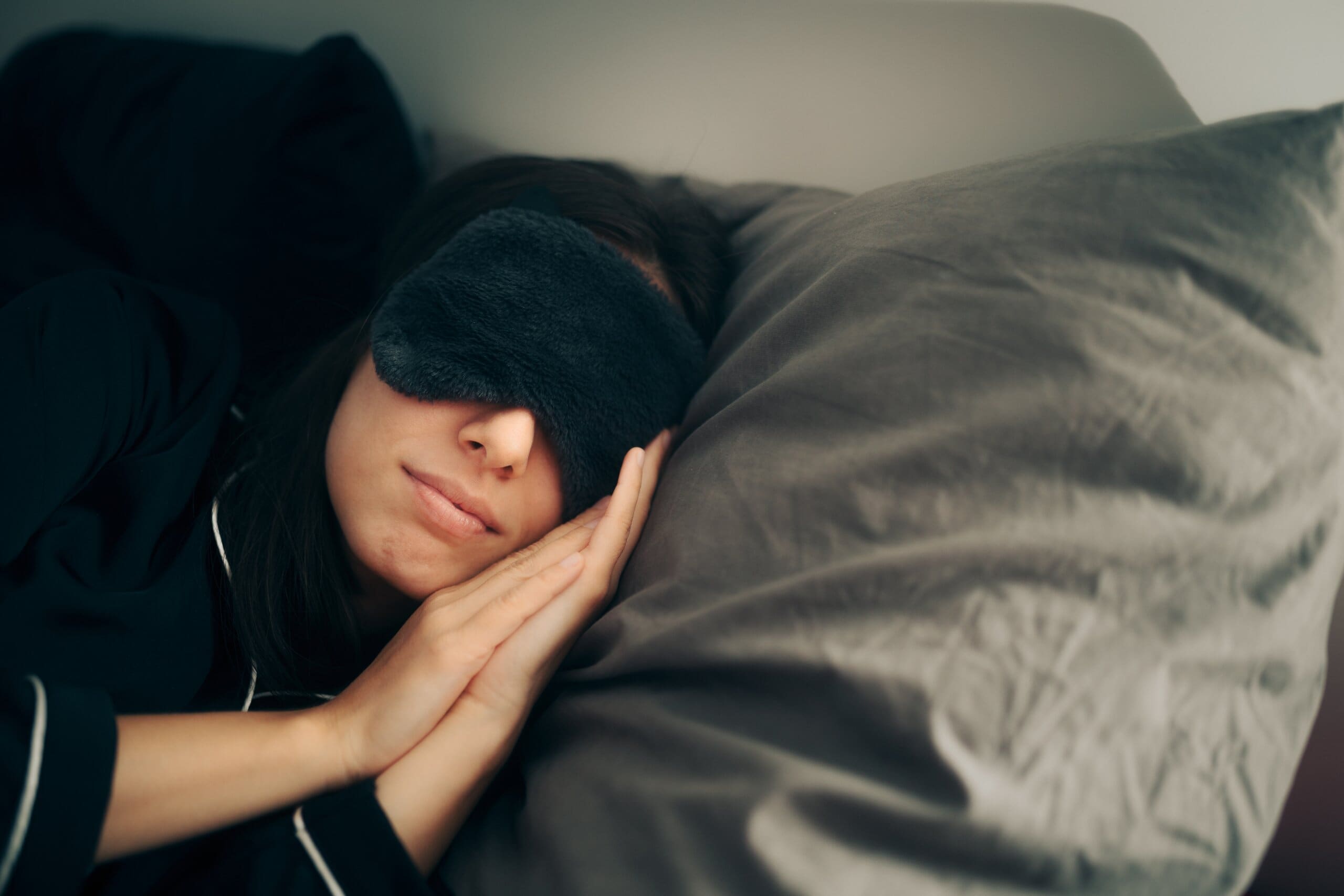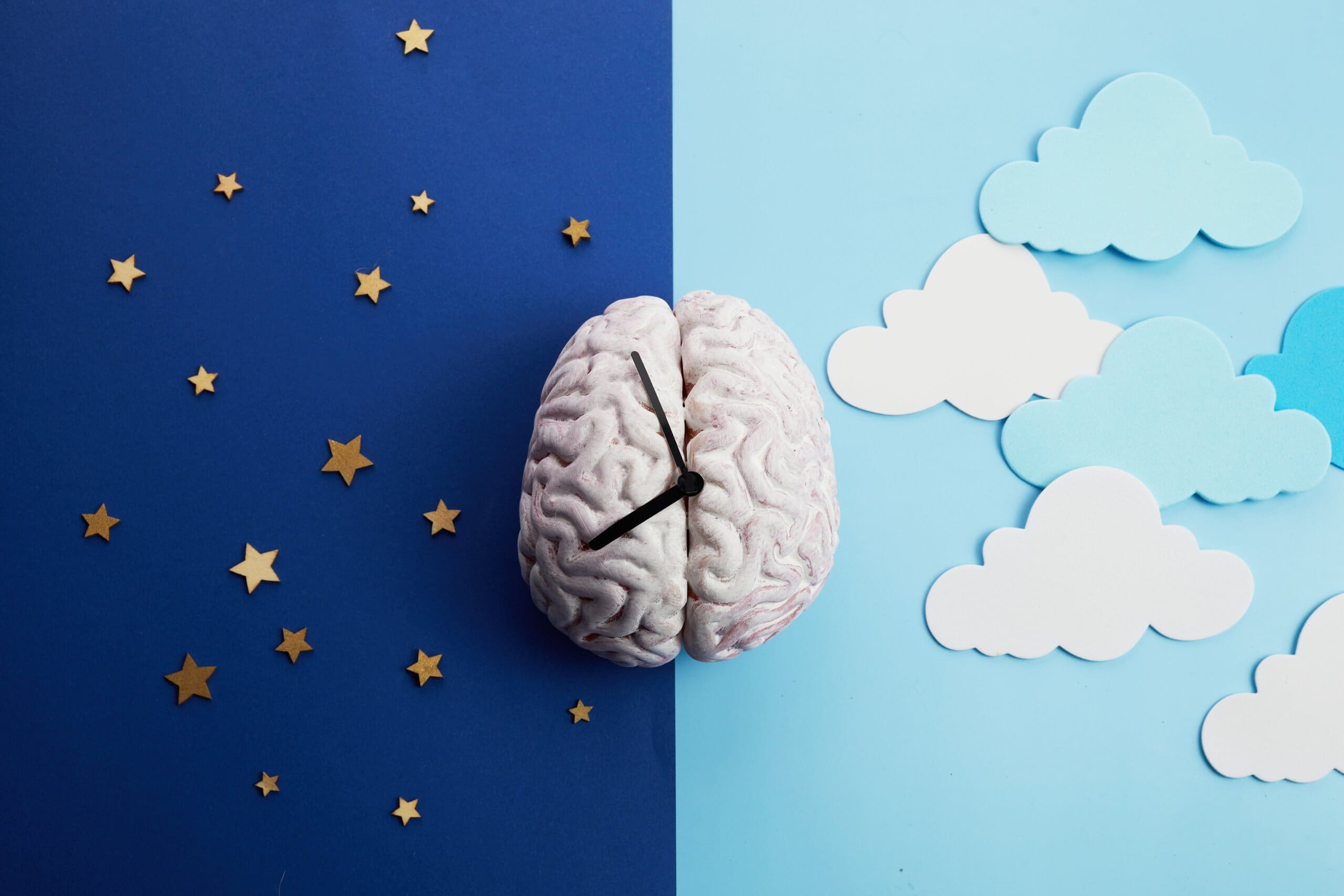The amount of sleep that everyone needs can vary quite a lot, and the number of hours of sleep you need will change throughout your lifetime – for example, newborn babies up to 3 months old need between 14 and 17 hours of sleep every day, while adults over the age of 18 only need seven to nine hours. But all of us will experience different sleep cycles while we’re resting, which are the different stages of brain activity we experience while we’re sleeping.
This guide will help to explain what a sleep cycle is and the different stages of a sleep cycle, as well as detailing how long the average sleep cycle is and how many cycles you might go through during an average night’s sleep.

What is a sleep cycle?
While you are asleep, you might not be aware that your brain is going through different stages of activity – there are four stages of brain activity that we experience during a typical period of sleep, and we can categorise them into two types – Rapid Eye Movement or REM sleep, and Non-Rapid Eye Movement or NREM sleep. Each of the four stages is characterised by very distinct brain activity and patterns, and each stage has different features, such as how easy or difficult it can be to wake someone up during that stage.
A wide range of factors like age, recent sleep patterns, and alcohol consumption can influence your sleep cycles, which varies from person to person and even from night to night for the same person. Shift workers, who make up 14% of the British population according to our guide on how to catch sleep during shifts, will find it much harder to get a good night’s sleep because they struggle to get into Stage 1 of the sleep cycle more than the average person.
What are the different sleep cycles?
There are four stages you can experience during a normal sleep cycle – the first three stages are NREM sleep, and the fourth is REM sleep. They are categorised as:
- Stage 1 or N1
- Stage 2 or N2
- Stage 3 or N3 (sometimes called delta sleep or deep sleep)
- Stage 4 or REM sleep

The four stages of a sleep cycle
Stage 1
This is the first stage of sleep you experience when you first lay your head down on your pillow. This is when your body is not completely relaxed yet, but your body and brain activity begin to slow down. This stage is very easy to wake someone up from, but if left undisturbed, someone can quickly fall into stage 2.
Stage 2
Stage 2 is still considered to be ‘light sleep’ but it is deeper than Stage 1. It’s characterised by a drop in your body temperature, relaxed muscles and a slower heart and breathing rate. Brain activity slows down even more, but some little bursts of activity are working to help keep you asleep, stopping external stimuli from waking you up. These little bursts of electrical brain activity are what experts consider to be your brain sorting out information and organising memories throughout your time of being awake. This is the stage of the sleep cycle that you will spend the most time in.
Stage 3
Stage 3 is the deepest sleep you will experience in a cycle, and this is the phase that is hardest to wake someone up from. This is when your body is most relaxed, with all your muscles fully relaxed, and your heart rate and breathing being low and slow. This stage is characterised by your brain activity showing a pattern called delta waves. This stage is the most important for you to restore your body and your mind, giving you time for recovery and growth. You’ll spend the longest time in this stage at the beginning of the night, and after this spend more and more time in REM sleep instead.
Stage 4
A person's brain activity increases during REM sleep, nearing that which is seen when they are awake. The body also experiences atonia, which is a temporary paralysis of the muscles, except for those that control breathing and the eyes. While the eyes are closed, they can be seen moving rapidly, which gives this stage its name. The significant increase in brain activity during REM sleep is thought to explain why REM sleep produces the most vivid dreams. It is possible to have dreams during any sleep stage, but NREM dreams are less frequent and intense.

How long is a sleep cycle?
Sleep cycles are not the same length, even for the same person, from night to night. However, the average length for each sleep cycle is around an hour and a half as you go through each of the four stages:
- Stage 1 or N1 lasts for around one to seven minutes
- Stage 2 or N2 typically lasts 10 to 25 minutes
- Stage 3 or N3 (sometimes called delta sleep or deep sleep) lasts for 20 to 40 minutes
- Stage 4 or REM sleep can last anywhere from 10 to 60 minutes
How many sleep cycles do we have per night?
The answer to this is – it varies! In a typical night’s sleep, the average person will go through four to six sleep cycles. However, as people mature, their sleep patterns and types of sleep change a lot - newborns, for instance, spend more time in REM sleep than any other age group.
The amount of slow-wave sleep peaks in early childhood and then drops sharply in the teenage years. Slow-wave sleep continues to decrease throughout adulthood, and older people may not have any slow-wave sleep at all.


Want to know how you can get the ultimate night’s sleep and hit all the sleep cycles easily? Check out our guide on the ultimate sleep routine as recommended by sleep experts, and you’ll feel well-rested and ready for the day! Our Snooze News section is full of insights you can use to help you get a better night’s sleep and optimise your bedroom to ensure that you are the most comfortable and relaxed you can be at bedtime.






